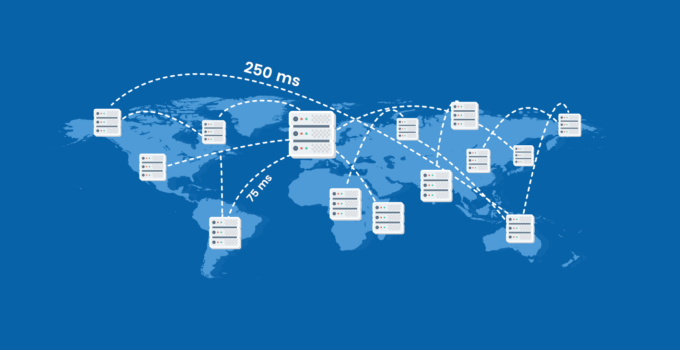We can see that businesses from all over the globe are always striving towards increasing their network efficiency. That way, they can provide their customers with much more reliable services. It needs to be said that companies are almost constantly under pressure from their clients to provide. In this day and age, we can see that customers have a lot of things they require from service providers, no matter what industry we are talking about.
Not only that keeping customers satisfying is crucial for keeping the highest percentage of them loyal to the brand, but it is important to maintain the authority they have established on the market. When you know that the competition is pretty steep in every market, you understand how crucial it is to maintain a good presence and make some quality moves. Anyone can see how steep it is, just tries to look for certain services online and you will see countless websites of companies that provide exactly that.
When we are on the topic of authority and credibility, it is clear that establishing it takes months, even years. But for it to plummet, the company just needs to make some bad moves. That’s why everyone should think carefully about these. In the last couple of years, we can see that the issue regarding edge computing architecture has become quite a prominent one. Not only because it is one of the latest trends, but it has proven itself to be quite effective.
While this is not a new idea, it has been enhanced through the concept known as IoT or the Internet of Things. The option itself became much more effective, and according to some, its potential before the appearance of this concept wasn’t nearly as good as it is now. Today, we want to provide you with the benefits of this approach you should be aware of. Without further ado, let’s provide you with these.
Page Contents
Explanation

Source: hpcwire.com
The best way to describe edge computing is to say that this is a procedure of relocation of critical data processing tasks. The transition starts at the networks’ core and moves towards the edge. What doesn’t it mean? Well, the edge is the moment when the end user will have a chance of using this data as a service provided to them by the provider. Therefore, getting the service becomes significantly easier for them, which only provides the company with reputability and credibility within the industry.
While it can be said that there are numerous reasons why this sort of architecture is needed for some sectors, it needs to be said that reducing latency is something that stands out as the most prominent benefit. We are talking about pointing out the difference between high-speed and the potential loss of clients, in terms of providing clients with responsive services that will meet their needs and preferences. As we already said, sometimes, this is not something you can achieve easily.
As we’ve already said, clients have more requirements than ever before. Sure, it needs to be said that this is not something that has come as a result of them being too needy. In fact, the market itself and all the trends that have started to appear in each industry have led them towards expecting more personalized and better overall service. It’s just something service providers need to accustom to.
Latency in the context of networking
Discussing the network latency wouldn’t be complete without including some examinations that can help with making the difference between bandwidth and network latency. The problem with these two terms is that they are often used without any prior knowledge. The trick is that they are related to very different things. For that reason, we believe that shining a light on both of these concepts is an absolute must for our readers to have a better understanding of these two.
What is Bandwidth?

Source: oxfordwebstudio.com
The quality of data that is sent through these channels in a single go is usually measured and displayed as a bandwidth. Basically, the larger the available bandwidth is, the more data can be sent through this channel. Generally speaking, increasing these means that the network gets additional speed, and as a result of that, you can expect much more data to be sent through these channels. You will certainly agree that this benefit is rather obvious, right? The user has an option to send a lot of it in the shortest time possible. It means that a lot can be achieved much sooner than planned.
At the same time, the performance of the network is still something that needs to be concerned, in terms of the quantities of the data that can be processed while being sent to many different locations within a network. Plus, it needs to be said that increasing the bandwidth doesn’t guarantee any benefits, especially if the servers are not as good as they should be. If that’s the case, the data you are about to send will just choke through the server. For that exact reason, these two things need to go hand in hand.
On the other hand, adding some additional servers enables the network to absorb more bandwidth through the reduction of congestion. Once again, we want to repeat that using these servers needs to be done properly. Otherwise, it is possible to make a mistake that could cost you way more than it provides you with. For that simple reason, you need to be extremely picky when it comes down to choosing these. Before you make the final decision, researching your options is an absolute must.
What is Latency?
During the procedure when the data packet is starting to travel from point A to point B, a thing that makes all the difference, and is used to measure it, is known as latency. Without it, it is not possible to make the journey complete. Sure, the connection is an important thing. However, underestimating the distance, which is a good way to determine the delay, is a big mistake. If you do not have proper experience when it comes to determining these, be sure to visit https://beeksgroup.com/.

Source: upphone.com
The reason for that is data is bound by basic physics. It means that it can’t travel faster than the speed of light, which is something we can all agree upon. It doesn’t matter how fast the connection is the data still has to travel from point a to point b physically. Therefore, nobody should be surprised by the fact that it requires more time and more resources, right? When you compare the bandwidth you will see that increasing the number of servers will not show the results immediately.
We can all agree that wasting resources on something you do not need is not something anybody wants to experience. For that reason, it is vital to take care of all the things related to this issue should be an absolute must for everyone out there. As is the case with bandwidth, you should make sure that all the relevant things are complimented for you to use them properly. Naturally, this requires having an insight into a wide array of different elements, which is not always easy, especially if someone doesn’t have the needed experience in this field.
Another thing we want to discuss is what causes the network’s latency. Besides the obvious one, the distance some data needs to travel. At the same time, the number of requests clients make and the number of servers that have to respond to all these applications is another thing that requires your attention. In some stations, the client device refers to the machine the end-user is using at the moment. However, it can also happen that this device is some sort of middle man between the server and the end-user. It serves as a channel that provides the user with the needed information or service.
The final aspect we need to point out is that data can go through a couple of networks before it reaches the final destination. Why is this important to understand? Well, in every network out there is a possibility for latency to get increased. It doesn’t matter how long this travel would be through a certain network, it needs to be said that the chances of increased latency can get pretty high.
In Conclusion

Source: networkworld.com
Having a properly made network is by far, the most efficient method to increase the server connectivity while it covers different distances. The reason is quite simple, the data is going through the fiber optic cables much faster than copper ones. As you can see, this is a rather complex story. That’s why having a serious education about this aspect is an absolute must if you want to understand it properly and be able to make decisions and selections that are worth your while.
Even though the data is usually routed along the same channels while inside a network, that doesn’t necessarily mean this will always be the case. It’s because routers and switches will have a priority to find the right path where this should go through. Naturally, the safest and shortest distance is not always possible. Therefore, the data packets can travel quite a lot of distance, through numerous connections, all of which increase latency in a network environment.
Here, we’ve presented you with all the relevant points you should be aware of when it comes to latency-based networks. We’re sure you will find them both informative and useful in your future decisions regarding the projects you’re working on.





